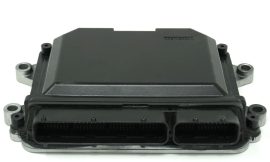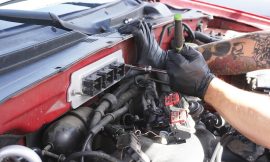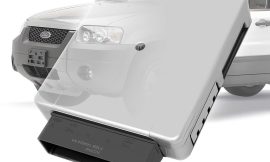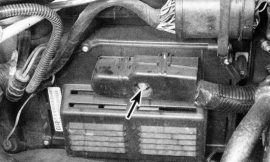Last updated on November 4th, 2024 at 10:53 am
A well-functioning air conditioning system is essential for a comfortable and enjoyable driving experience, particularly during the sweltering heat of summer. It provides relief from the outdoor heat, ensures a comfortable environment inside the vehicle, and helps maintain focus while driving.
However, like any other component of a vehicle, the air conditioning system can run low on refrigerant over time, affecting its efficiency. This article guides you through the process of recharging your car’s air conditioning system, ensuring it continues to work optimally for those hot summer drives.
The Role and Importance of a Functional A/C System
A fully functional air conditioning system in a vehicle is far more than just a luxury—it’s a crucial component contributing to the overall comfort and safety of both the driver and passengers. During the hotter months, it maintains a cool and comfortable temperature within the car, providing a sanctuary from the blazing sun and intense heat outside. This not only increases comfort but also helps to prevent conditions like heatstroke, which can occur when the body is exposed to excessively high temperatures for prolonged periods.
A well-maintained A/C system is also a deterrence against driver fatigue. On long drives, particularly in hot weather, a cool interior environment can help keep the driver alert and focused, potentially reducing the risk of road accidents.
Besides temperature regulation, the air conditioning system also plays a role in air quality inside the vehicle. It filters out pollutants and airborne particles, ensuring that the air you breathe while in the car is clean and safe. However, when the A/C system is failing or the refrigerant is running low, it may not filter the air efficiently, and the quality of air inside the vehicle may deteriorate, possibly causing discomfort or exacerbating respiratory issues for those inside.
Signs Your Car’s A/C System Needs Recharging
Recognizing the signs that your car’s air conditioning system needs recharging can help prevent a complete breakdown of the system and ensure continuous comfort and safety during your drives. Here are the most common symptoms to watch out for:
- Reduced Cooling Efficiency: The most noticeable sign that your car’s A/C system needs recharging is decreased cooling performance. If you notice that your car isn’t getting as cold as it used to, or it’s taking longer to cool down, your A/C system may be low on refrigerant.
- Unusual Noises: When the refrigerant level is low, the A/C compressor has to work harder, which might lead to unusual noises when the A/C is running. If you hear squealing, rattling, or grinding sounds when you turn on the A/C, it may be a sign that it needs to be recharged.
- The A/C Clutch Fails to Engage: The A/C clutch engages when the A/C system is turned on, and it disengages when it’s turned off. If the A/C clutch does not engage when you turn on the system, it could be a symptom that there isn’t enough refrigerant in the system.
- Visible Refrigerant Leaks: If you spot oily stains underneath your vehicle, this could suggest a refrigerant leak, which would require not only recharging the system but also repairing the leak.

Safety Precautions
Before you start the process of recharging your car’s air conditioning system, it’s crucial to follow some safety precautions.
- Wear Protective Gear: Always wear gloves and safety glasses to protect your hands and eyes from any potential refrigerant leaks. The refrigerant can be harmful if it comes in contact with your skin or eyes.
- Ensure Adequate Ventilation: Perform the recharging process in a well-ventilated area, preferably outdoors. If you must do it indoors, make sure to open all doors and windows to ensure proper ventilation.
- Do not Overcharge: Overcharging the A/C system can lead to decreased performance and potential damage. Always adhere to the manufacturer’s recommended levels.
- Avoid Flames and Sparks: The refrigerant can be highly flammable. Keep the area where you’re working free of any open flames or sparks.
- Check for Leaks: Before recharging, check for leaks in the system. If you find any, it’s best to get these repaired before adding more refrigerant.
Step-by-Step Guide to Recharging Your Car’s A/C System
Recharging your car’s A/C system can be a straightforward process if you have the right tools and follow the steps carefully. Here’s a simple guide:
- Purchase a Refrigerant Kit: These kits are widely available in auto parts stores. Ensure you buy the correct type of refrigerant for your vehicle (this can be found in the vehicle’s manual).
- Locate the A/C Compressor: This is typically found near the front of the engine compartment. Look for two hoses coming out of it – one high-pressure and one low-pressure. You will be working with the low-pressure side.
- Attach the Refrigerant: Attach the hose of your refrigerant refill kit to the low-pressure port.
- Start Your Car: Turn on your vehicle and set your A/C to maximum cool and maximum air flow.
- Begin Recharging: Release the refrigerant by squeezing the trigger on the refill kit hose. Make sure to follow the instructions provided with your kit to know how long to do this.
- Check the Pressure: Most kits have a gauge that will let you know when the correct pressure has been reached. If not, you may need to purchase a separate pressure gauge.
- Finish Up: Once the correct pressure is reached, close the valve on the refill kit and remove the hose from the low pressure port. Make sure to replace the cap on the low-pressure port.
- Test the Results: Finally, allow your car to run for a few minutes with the A/C on maximum to see if it’s cooling more efficiently.
Remember, if at any point you’re unsure about any of the steps or if your A/C system still doesn’t seem to be working properly after recharging, it’s best to consult a professional.
To ensure the optimal performance of your car’s A/C system, regular maintenance is key. Key steps to recharge the A/C system include purchasing a refrigerant kit, locating the A/C compressor, attaching the refrigerant to the low-pressure port, starting the car, releasing the refrigerant, checking the pressure, and testing the results. However, it’s crucial to observe some safety precautions throughout the process. Wear protective gear, ensure adequate ventilation, avoid overcharging the system, steer clear of flames and sparks, and check for leaks before beginning. If at any point the process seems confusing or if the A/C system isn’t functioning properly post-recharge, professional help should be sought. Regularly maintaining and checking your A/C system will help preserve its efficiency, ensure your comfort, and potentially prevent costly repairs down the line.
Frequently Asked Questions (FAQs)
- How often should I recharge my car’s A/C system?
Typically, a car’s A/C system does not need regular recharging. If you notice decreased cooling efficiency or other signs of A/C system issues, it may be time to recharge. However, it’s best to consult your vehicle’s manual or a professional for specific guidance.
- Can I recharge my car’s A/C system myself?
Yes, with the right tools and safety precautions, you can recharge your car’s A/C system at home. However, if you’re unsure about any steps or if the system still isn’t working correctly after recharging, you should seek professional help.
- What are the risks of not recharging my car’s A/C system?
Neglecting to recharge your A/C system when needed can lead to decreased cooling efficiency and potential damage to the A/C compressor, which could result in costly repairs.
- How do I know which refrigerant to buy?
The type of refrigerant required for your vehicle can be found in the vehicle’s manual. If you’re unsure, you can also consult with a professional or an auto parts store.
- What do I do if I spot a leak in the A/C system?
If you spot a leak, it’s best to get it repaired before recharging the system. A professional can help identify the source of the leak and recommend the best course of action.
















